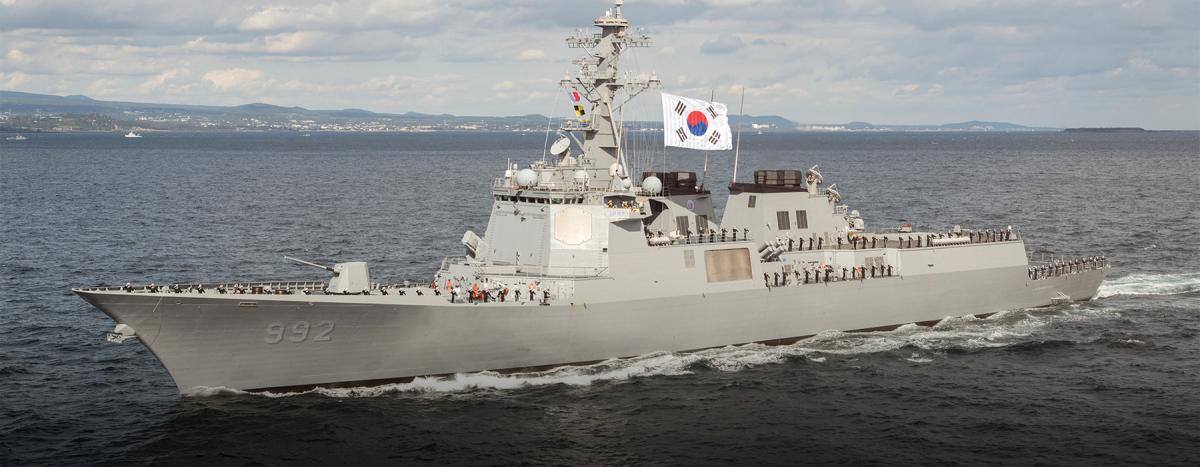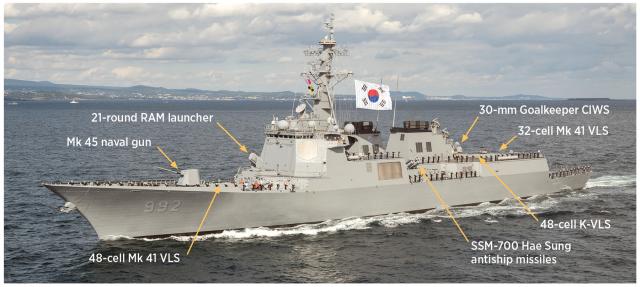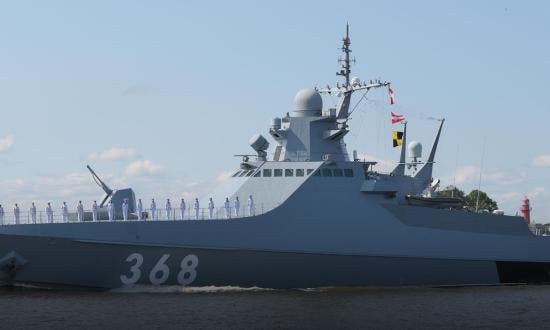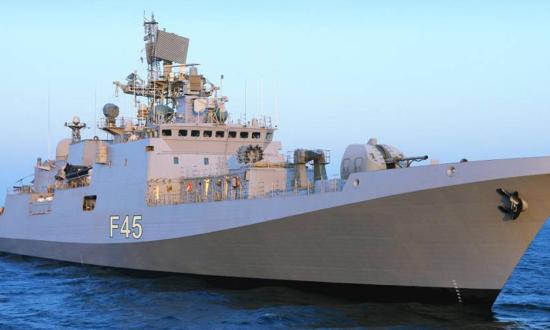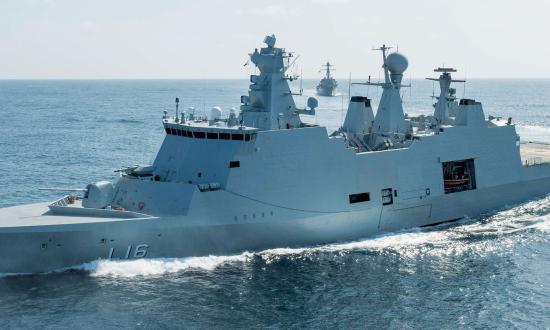The three KDX III Sejong Daewang–class guided-missile destroyers operated by the Republic of Korea are the third iteration in the Korean Destroyer Experimental (KDX) program. Fitted with the SPY-1D (V) radar and the Aegis combat system, these are powerful multimission destroyers for air defense, antiship, land attack, and antisubmarine warfare operations.
Each destroyer is fitted with 128 vertical launch missile cells, making them the most heavily armed Aegis warships afloat. The destroyers are armed with a 48-cell Mk 41 vertical launch system (VLS) forward of the bridge and a 32-cell Mk 41 VLS atop the helicopter hangar for SM-2 Block IIIB surface-to-air missiles. The Mk 41 batteries are supplemented by South Korea’s domestically designed K-VLS, providing an additional 48 cells. The K-VLS carries a mix of Hyunmoo 3/Cheon Ryong land-attack missiles, which have a reported range of more than 800 nm, and Hong Sang Eo antisubmarine rockets, which can carry a lightweight torpedo to a range of around 10 nm and are similar to U.S. vertically launched antisubmarine rockets.
To hunt submarines, the class is fitted with hull-mounted and towed array sonars. A helicopter landing deck and hangar provide ample space to operate two Seahawk or Super Lynx maritime helicopters. For point defense, the KDX-III carries a 21-round launcher for RIM-116 Rolling Airframe Missiles (RAM) and a 30-mm Goalkeeper close-in weapon system (CIWS). Antiship armament consists of up to 16 SSM-700 Hae Sung antiship missiles, each with a range of around 80 nm, fitted in canister launchers amidships. A single Mk 45 5-inch gun is mounted forward.
The first of the class, the Sejong Daewang, was built by Hyundai Heavy Industries at Ulsan and entered the fleet in December 2008. Younger sister the Yulgok Yi I (pictured here) was built at Daewoo Shipbuilding and Marine Engineering in Okpo and commissioned in August 2010. A third DDG, the Seoae Ryu Seong-Ryong, also built by Hyundai Heavy Industries, entered service in August 2012.
Displacing roughly 10,000 tons and carrying a crew of some 320 personnel, the ships are powered by four LM-2500 gas turbines with two controllable-pitch propellers providing a top speed of 30 knots and a range of 5,500 nm at 20 knots. The vessels are 545 feet long with a 70-foot beam and a 21-foot draft. A second batch of three modified variants of the class is now under construction to supplement the initial three KDX III ships. Among their enhancements, the new KDX III Batch 2 destroyers will include an upgraded Aegis combat suite and more advanced ballistic-missile-defense capabilities. Delivery of the first Batch 2 warships is expected to begin by 2025.



